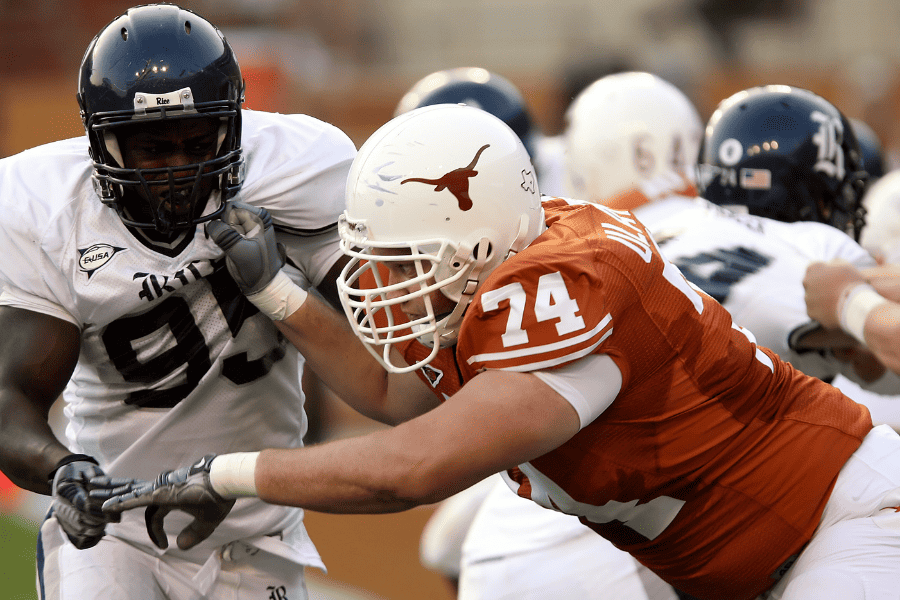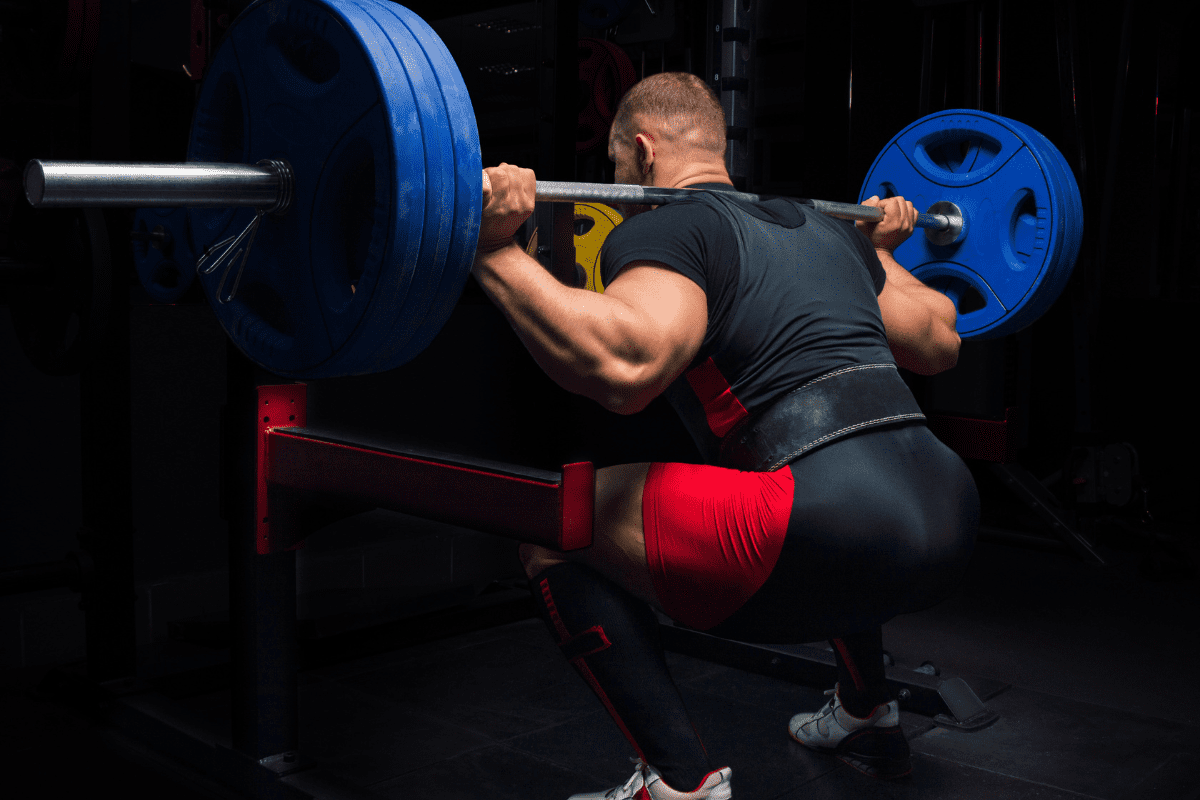What’s a Good Back Squat for a College Football Player?
The Back Squat is one of the standard tests used to measure the strength, particularly lower body strength, of college football players (and athletes in general).
I went through 20 years of data on college football Back Squat numbers with teams that I’ve worked with, combined with numbers from other strength coaches, and have broken it down by position into ranges of what’s considered “good”.
How Heavy is Considered Good for Back Squat?
Before we get into the numbers, please understand that “good” is very relative.
For example, if you’re a high school sophomore you most likely will not stack up to the numbers listed below and that’s okay. You still have a lot of development and maturing to do and your Back Squat will improve quite a bit over the next couple of years with proper training.
Also, you’re going to find a difference depending on what level of college football you’re examining. Average numbers at an SEC school are generally going to be higher than what you may find at a D2 or D3 school.
Next, while these are broken down by position, size is still a huge factor when evaluating what a good Back Squat is.
I’ve coached Defensive Ends who were 215 pounds and I’ve coached Defensive Ends who were 285 pounds. All else being equal, a 285-pound athlete is likely to have a better squat.
Finally, squat numbers are easily the most overinflated numbers within the weight room. I can’t begin to tell you how many “500-pound Squatters” have walked into the weight room as a freshman and tested out at 315 pounds.
Don’t get me wrong, 315 pounds is a terrific squat for a freshman football player. But, because of the quarter-squat epidemic, the amount of players (and people in general) who think they squat way more than they actually do is staggering.
Back Squat Numbers By Position
| College Football Back Squat Ranges by Position | |||||
| Position | Reserve | Starter | All-Conference | All-American | NFL Athlete |
| Quarterback | < 325 | 325 – 374 | 375 – 414 | 415 – 444 | > 444 |
| Running Back | < 375 | 375 – 394 | 395 – 434 | 435 – 474 | > 474 |
| Wide Receiver | < 325 | 325 – 364 | 365 – 404 | 405 – 444 | > 444 |
| Tight End | < 385 | 385 – 414 | 415 – 464 | 465 – 494 | > 494 |
| Offensive Line | < 415 | 415 – 454 | 455 – 504 | 505 – 544 | > 544 |
| Safety | < 355 | 355 – 384 | 385 – 424 | 425 – 464 | > 464 |
| Cornerback | < 315 | 315 – 364 | 365 – 394 | 395 – 434 | > 434 |
| Linebacker | < 365 | 365 – 404 | 405 – 444 | 445 – 474 | > 474 |
| Defensive Ends | < 385 | 385 – 424 | 425 – 464 | 465 – 494 | > 494 |
| Defensive Tackles | < 405 | 405 – 454 | 455 – 494 | 495 – 534 | > 534 |
What Do The Categories Mean?

The terminology I used for each category was Reserve, Starter, All-Conference, All-American and NFL Athlete.
RELATED –> What is Considered a Good Bench Press for a College Football Player
These are just categories that I found resonated well with our players. They don’t carry any deeper analytical meaning though. They could easily be Elite, Above Average, etc.
Where Do These Numbers Come From?
The number ranges are rooted in historical data that I’ve accumulated over the course of my career.
Coach’s Note: These numbers are all One Rep Maxes. I’ve personally never been a fan of rep maxes.
Other input like testing data that our coaching staff had acquired in their careers and feedback we received from peers in the strength and conditioning field are also considered.
Finally, when looking at the category ranges understand that they are not designed to be evenly distributed.
Most of the guys on our team would fall into the Starter or All-Conference categories (freshmen often fell into Reserve or Starter). Fewer players would achieve All-American level and fewer still would reach NFL Athlete.
Squat Numbers by Bodyweight

Instead of categorizing by position, you can also consider an athlete’s Back Squat compared to their bodyweight.
Being able to Back Squat 2 times your bodyweight is considered very good, whether you’re a football player or a weekend warrior. Being able to Back Squat two and a half times your bodyweight puts you in extremely rare territory.
Using bodyweight as a means to evaluate Back Squat numbers does have its flaws though. Shorter, more compact, players will tend to have a better Squat to Bodyweight ratio than taller, longer players.
Heavier players (talking about D1 Linemen here) will also tend to have lower ratios than smaller skill and combo players.
For example, a 200-pound running back who can Back Squat 400 pounds (2 times bodyweight) is good. However, a 300-pound offensive tackle who can Back Squat 600 pounds (also 2 times bodyweight) is extremely good.

Online Strength Programs
- 1-on-1 Online Coaching
- Sports Performance Programs for Football, Basketball, Soccer & More
- Programs for Former Athletes (Legends) Who Still Want to Train Like Athletes
- Programs for Adults Who Want to Get Healthy (and look great at the beach!)
- Use Code “HB10” to Get 10% Off Today
Final Thoughts
The Back Squat (along with staples like the Power Clean) is one of the most popular physical tests done at the college football level and I don’t see that changing anytime soon.
Knowing what a good Back Squat number is at your position is a great way to set goals and use them as motivation.
Just remember, if you’re still a few years away from college, your numbers may still have a lot of improvement left to go, but don’t let that discourage you! Work hard, work smart and you’ll see your Back Squat continue to improve.

